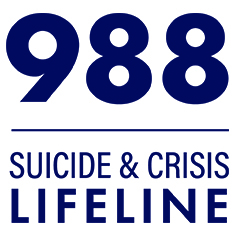Recommendations to Prevent Suicide among Older Adults
February 22, 2012
An international expert panel created in 2009 at the First International Conference on Elderly and Suicide recently published a list of “key considerations for future prevention projects that would address suicide and suicidal behavior in older adults.” The panel issued recommendations at the universal, selective, and indicated prevention levels and “unanimously agreed that evidence-based findings are scant and that there is an urgent need for studies documenting outcomes of intervention aimed at reducing suicidality in older people.” The panel agreed that universal prevention measures should include self-administered depression screens, means restriction, and strategies to help older adults cope with their increasing dependence on others. The members also reached consensus on the need for education on healthy aging as well as risk and protective factors for suicide among older adults. They also recommended that guidelines for reporting suicide in older adults should be developed and disseminated. Selective interventions endorsed by the panel include providing screening tools to staff in medical and social service settings; improving the treatment of psychiatric problems, sleep issues, pain, and physical ailments among older adults; improving outreach to older adults, especially men, who may be isolated or under stress; and educating professionals and others about how alcohol abuse, changes such as retirement and the loss of a driver’s license, and physical infirmities can contribute to the risk of suicide among older adults. Some of the panel’s recommendations concerning indicated prevention strategies include: offering “assertive help after a suicide attempt”; implementing collaborative care management in geriatric healthcare settings; training healthcare and social service professionals in the “detection, intervention, and management of depression and suicide in later life”; and using gatekeeper training to teach laypeople to recognize and respond to suicide risk in older adults. The panel also stressed the general importance of (1) evaluating interventions, (2) creating a surveillance system that can track suicidal behavior at the community level, (3) using multiple components that addres all three prevention levels of prevention, and (4) the need for resource centers to assist organizations and agencies working to prevent suicide. Resource Notes A review of elderly suicide prevention programs was featured in the February 5, 2012 issue of the Weekly Spark. Promoting Emotional Health and Preventing Suicide: A Toolkit for Senior Living Communities is available at no cost from the publications section of the SAMHSA website (http://store.samhsa.gov/product/Promoting-Emotional-Health-and-Preventin…).
Key considerations for preventing suicide in older adults: Consensus opinions of an expert panel. Erlangsen, A., Nordentoft, M., Conwell, Y., Waern, M., De Leo, D., Lindner, R.,…Lapierre, S.; International Research Group on Suicide Among the Elderly. Crisis, 32(2), 106-109.
